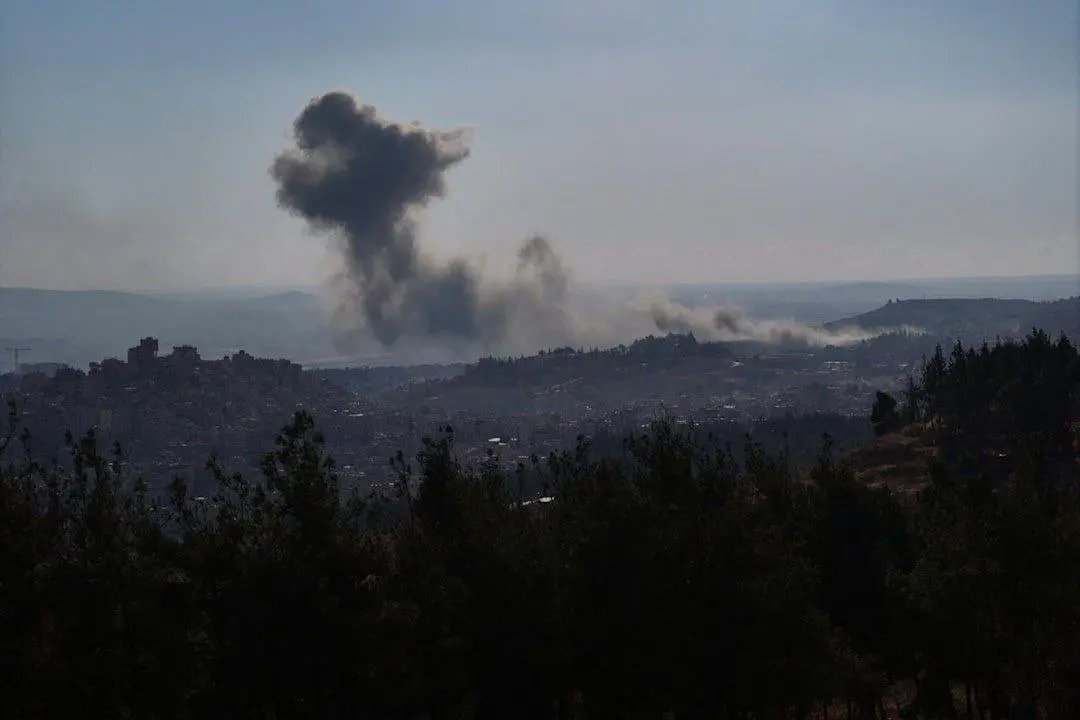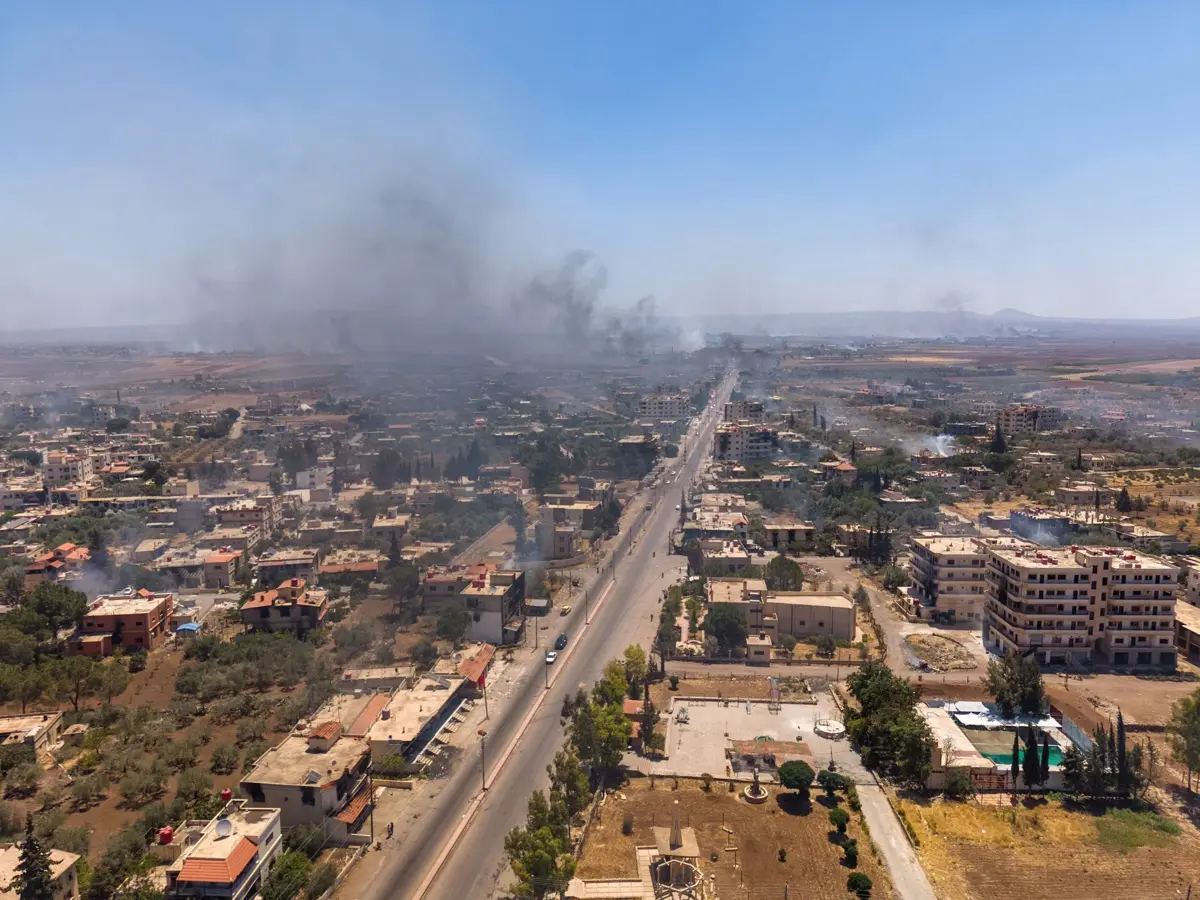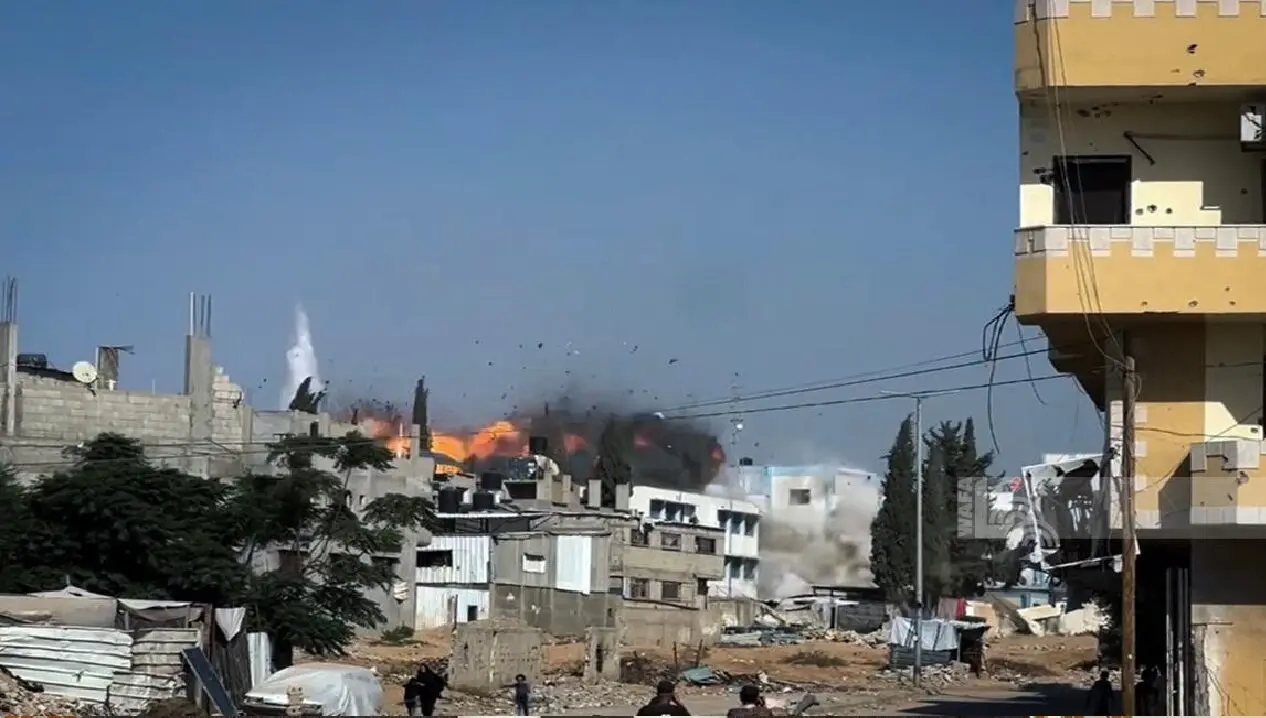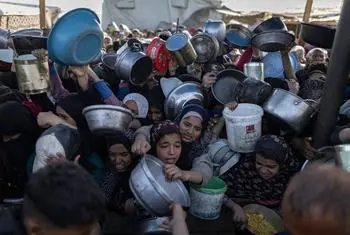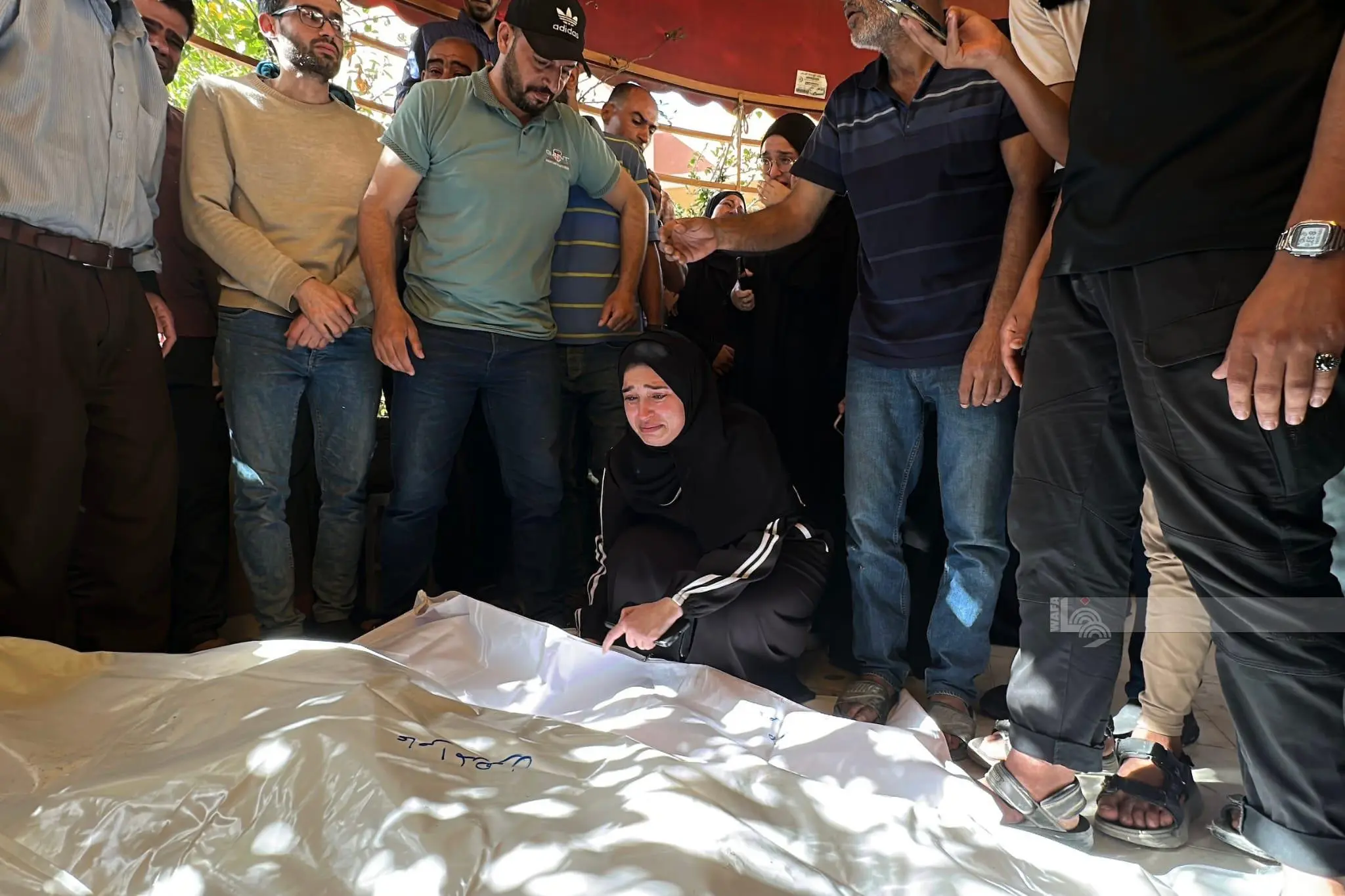Over 30 Palestinians Killed Near U.S.-Backed Aid Sites as Gaza Crisis Deepens
Over 30 Palestinians were killed when Israeli forces opened fire near U.S.-backed food distribution centers in Gaza. The deaths raise questions about the conduct of military operations and humanitarian aid amid a looming famine.
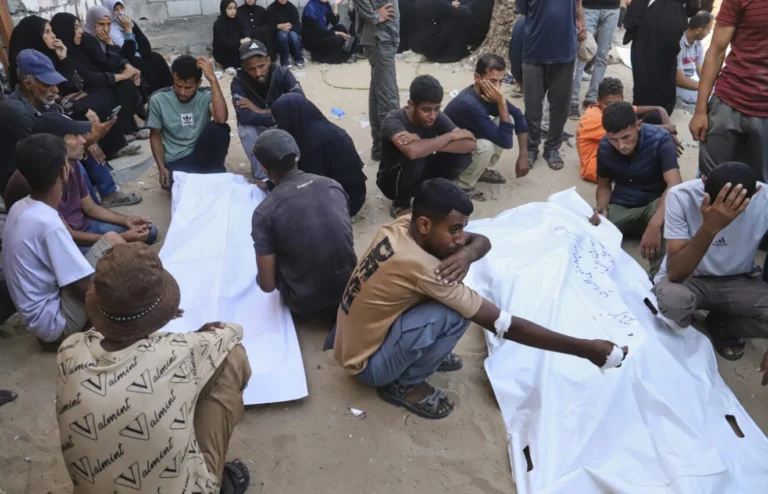
Mourners wait outside Khan Younis’s Nasser Hospital after dozens were killed attempting to access food near U.S.-backed aid sites. Photo: AP
July 19, 2025 Hour: 7:03 am
At least 32 Palestinians were killed Saturday when Israeli forces opened fire near food distribution sites operated by the U.S.- and Israeli-backed Gaza Humanitarian Foundation (GHF), according to local health officials and eyewitnesses. The incidents have raised further alarm over the safety of humanitarian operations and the ongoing famine threat in the Gaza Strip.
RELATED:
Six civilians killed in Israeli strikes and attacks across war-torn Gaza
The deadly shootings took place in two locations in southern Gaza: near the Teina area, east of Khan Younis, and in the Shakoush area near Rafah. Witnesses described chaotic scenes as desperate civilians approached GHF food hubs, only to be met with Israeli gunfire.
The GHF, which began distributing food in late May with support from the U.S. and Israeli governments, has been positioned as an alternative to the U.N.-led aid system. Washington and Tel Aviv have accused Hamas of diverting U.N. supplies—claims the U.N. has strongly rejected.
While the GHF says it has delivered millions of meals, health officials and local witnesses report that hundreds of people have been killed by Israeli fire while trying to reach its aid centers. The Israeli military, which secures the zones from a distance, insists it fires only warning shots to keep crowds away from its forces.
However, survivors of Saturday’s incident in Teina described the shooting as direct and sustained. Mahmoud Mokeimar, who was among a large group walking toward a GHF hub, said: “It was a massacre … the occupation opened fire at us indiscriminately.” He said he saw multiple bodies and injured people trying to flee.
Another witness, Akram Aker, reported that tanks and drones were used to fire on the crowd between 5 and 6 a.m. “They encircled us and started firing directly at us,” he said.
The Nasser Hospital in Khan Younis confirmed receiving 25 bodies and at least 70 wounded. Dr. Mohamed Saker, head of the hospital’s nursing department, said most of the injured were shot in the head and chest. “The situation is difficult and tragic,” he added, noting the facility’s critical shortage of medical supplies.
Among the dead was 19-year-old Hisham Fesifes. His father, Monzer Fesifes, a Palestinian-Jordanian, said: “He went to bring food from the failed U.S., Zionist aid to feed us,” and appealed to the Jordanian government to evacuate his family from Gaza.
In a separate incident near Rafah, seven more people, including one woman, were killed as they approached another GHF site in the Shakoush area, according to health ministry officials.
The GHF, which contracts private armed guards, claimed there have been no fatal shootings at its distribution points. However, 20 people died earlier this week during a stampede at one of its sites. The organization blamed the chaos on “Hamas agitators” but did not provide evidence.
Videos obtained by the Associated Press from an American contractor working with GHF show chaotic conditions at distribution centers, with contractors deploying tear gas and stun grenades to control crowds. Gunfire is also audible in the footage.
The Israeli military, meanwhile, reported striking 90 targets across Gaza in the last 24 hours, including what it called “terror infrastructure” in Gaza City and the northern region. It did not comment on the incidents near the GHF hubs.
In Gaza City, an Israeli airstrike hit a displacement camp in the courtyard of the Development Ministry, killing two people, according to Fares Awad, head of the Health Ministry’s emergency services in northern Gaza.
Context and Escalation
Gaza’s population of over two million faces an unprecedented humanitarian disaster. The territory is on the brink of famine, food security experts warn, with nearly all residents displaced and aid severely limited.
The replacement of U.N. aid distribution with GHF-led operations has drawn criticism. While Israel and the U.S. argue that Hamas diverts aid, the United Nations has denied the allegations and defended its capacity to deliver food and medical assistance.
Since the war began on October 7, 2023—when Hamas launched an attack into southern Israel, killing 1,200 people and taking around 250 hostages—Israel’s military campaign has killed over 58,000 Palestinians, according to the Gaza Health Ministry. More than half of those killed were women and children.
Though the Health Ministry operates under Hamas authority, the U.N. and international humanitarian organizations regard it as the most reliable source of war casualty data.
Ceasefire negotiations between Israel and Hamas, mediated by Qatar, have continued in recent weeks but have yielded no breakthroughs.
As ceasefire talks remain deadlocked and humanitarian conditions worsen, the killing of Palestinians near food distribution points underscores the urgent need for safe, depoliticized aid corridors in Gaza. For many, the simple act of seeking food has become a life-threatening risk.
Author: MK
Source: AP


